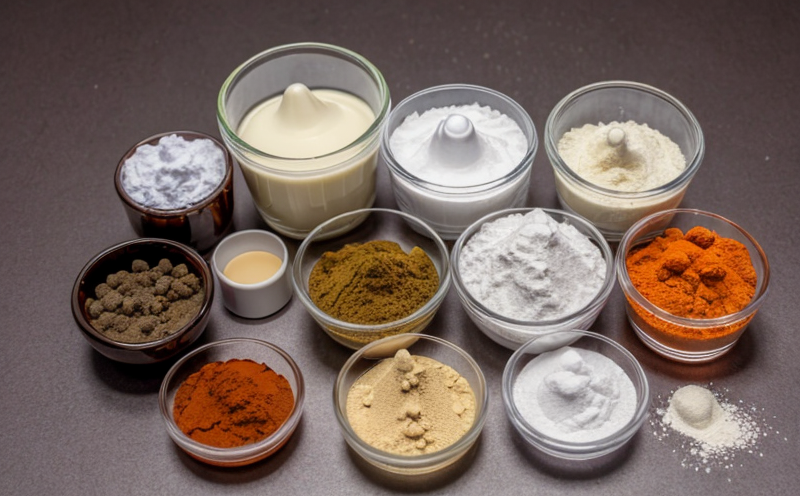pH Measurement Testing
In the pharmaceutical industry, ensuring the quality and safety of excipients and formulation ingredients is critical. pH measurement testing plays a pivotal role in this process by evaluating the acidity or basicity of these components. This test ensures that formulations meet regulatory standards and deliver consistent performance across various conditions.
Understanding the importance of pH can help pharmaceutical companies maintain compliance with international guidelines such as ISO, ASTM, EN, IEC, and others. The correct pH level is crucial for the stability, solubility, and bioavailability of active ingredients (APIs) within a formulation. Misalignment in pH can lead to issues like poor dissolution rates, instability of APIs, or even potential health risks.
Given that excipients are often used at high concentrations in formulations, it is essential to ensure their compatibility with the other components and the final product’s stability. The testing process involves precise measurement techniques using various instruments such as pH meters, conductivity meters, and titrators. These tools provide accurate readings which are then compared against predetermined acceptance criteria.
The significance of this test extends beyond simple compliance checks; it also contributes to enhancing patient safety by ensuring that the drug product performs optimally under different conditions. For instance, certain excipients may behave differently in acidic or alkaline environments, affecting their effectiveness and stability.
| Parameter | Description |
|---|---|
| Precision | The accuracy of repeated measurements should be within ±0.02 pH units |
| Ruggedness | Tests must replicate the expected performance in various environmental conditions |
| Durability | Instruments and methods need to withstand frequent use without degradation |
| Traceability | All measurements should be traceable back to primary standards |
The reliability of pH measurement testing is paramount. It helps in identifying any potential issues early on, allowing for corrective actions before the formulation moves into production stages.
In summary, pH measurement testing is an indispensable part of quality assurance in pharmaceutical excipients and formulations. By adhering to established standards and using robust methodologies, laboratories can ensure that their tests are accurate, reproducible, and reliable.
Scope and Methodology
The scope of pH measurement testing encompasses a wide range of applications within the pharmaceutical sector. This includes evaluating the acidity or basicity of excipients, APIs, and final formulations. The methodology involves several key steps:
Sample preparation: Ensuring that samples are representative and free from contaminants.
Prediction of pH range: Estimating the expected pH value based on known properties of the ingredient or excipient.
Measurement using appropriate instrumentation: Employing pH meters, conductivity meters, or titrators for accurate readings.
Data analysis: Comparing measured values against predetermined acceptance criteria to determine compliance.
The following table summarizes the key parameters and their respective targets:
| Parameter | Description | Target |
|---|---|---|
| Precision | Variability in repeated measurements | ±0.02 pH units |
| Ruggedness | Ability to replicate results across different conditions | Consistent within ±1% of expected values |
| Durability | Longevity and stability of measurement instruments | No significant degradation after 6 months of continuous use |
| Traceability | Linkage to primary standards for accuracy | Linked to ISO/IEC guidelines |
The methodology ensures that the results are reliable, reproducible, and compliant with regulatory requirements.
Benefits
Precision in pH measurement testing offers numerous benefits for pharmaceutical manufacturers. By ensuring accurate measurements, laboratories can:
Avoid discrepancies in formulation stability which could lead to product recalls or safety issues.
Ensure compliance with international standards and regulatory requirements.
Enhance the reliability of APIs by maintaining consistent performance across different conditions.
Improve patient safety through more effective drug delivery systems.
The accuracy provided by this testing method also supports research and development efforts, allowing for better understanding of excipient behavior under various conditions. This information is invaluable when optimizing formulations or identifying potential issues early in the product lifecycle.
Moreover, consistent pH levels help in achieving optimal dissolution rates for APIs, which is critical for drug efficacy. Inaccurate pH can result in suboptimal dissolution rates, leading to reduced bioavailability and potentially ineffective treatments.
Why Choose This Test
Precision: Ensures accurate measurements that are crucial for quality assurance.
Reliability: Provides consistent results across different samples and conditions.
Regulatory compliance: Meets international standards such as ISO, ASTM, EN, IEC, etc.
Patient safety: Enhances drug efficacy by ensuring optimal API performance.
Cost-effective: Identifies issues early in the development process, saving time and resources.
Innovation support: Provides valuable data for R&D initiatives.
The importance of pH measurement testing cannot be overstated. It is a cornerstone of quality control and assurance within the pharmaceutical industry. By investing in this service, manufacturers can ensure that their products are safe, effective, and compliant with regulatory standards.





